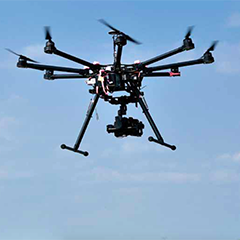Drones are everywhere today. Just five years ago they used to be only for the military, and cost millions. And now they are for hobbyists and even children. Now the race is on to fill the gap in the middle: startups, corporates and analysts are battling to find the most promising commercial applications for drones. Step forward: wind energy. We examine the latest developments.
Wind drone technology
How exactly does a wind drone work? Wind drones are a lot like kite surfers. Kite surfers use a kite and a tether to pull a surfer through the water. The same mechanism can be used to generate electricity. The tethered kite or wing is connected to a drum and a generator on the ground and the tether is wound around the drum. The wing pulls on the tether and turns the drum to generate electricity. Once the tether is fully unwound, the wing nosedives and the tether is quickly reeled in. Then the cycle starts again. This up-and-down motion led to the name of the “yo-yo” type wind drone.
Google X, overseen by Sergey Brin, is allegedly working on a different wind drone via its project Makani4. Google’s approach is to use little propellers (mini wind turbines) and generators directly mounted on the wing where they produce electricity. An electric cable is woven into the tether and transfers the electricity to the ground. Makani showed a working prototype already in 2013 and they announced that they will fly their first scaled up product with 600 kW output this year.
Google will be the first team that can show a wind drone with power outputs comparable to today’s wind turbines but it is not alone in having realized that drone technology is ripe to take on Lloyd’s formula. Companies including 3M, ABB, Alstom, E.ON, Honeywell, Statkraft and Softbank have conducted re-search into wind drones or financed one of the dozens of startups worldwide that are working on wind drones.



























